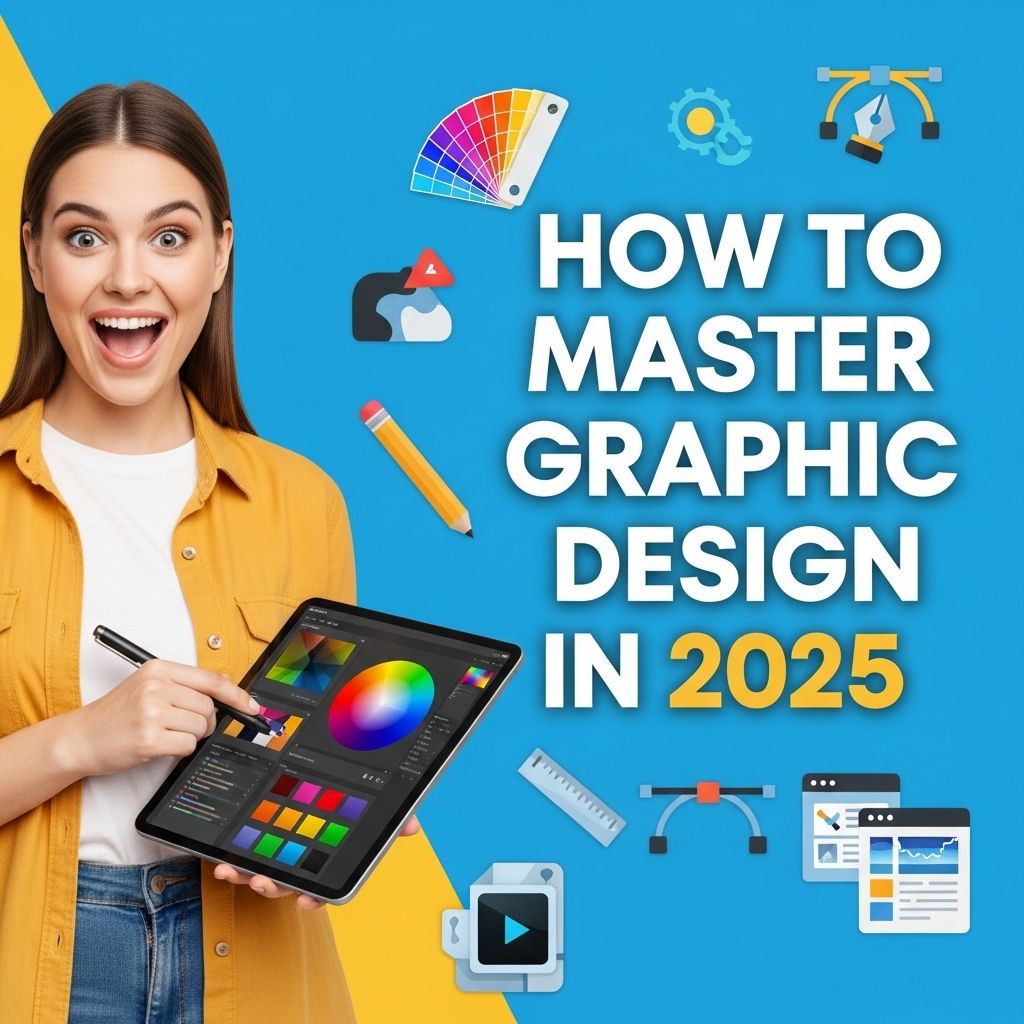As we approach 2025, the field of graphic design continues to evolve at a rapid pace. With emerging technologies, shifting consumer preferences, and the ever-growing demand for visually appealing content, mastering graphic design has never been more essential. Whether you are a budding designer or an experienced professional looking to enhance your skills, this article offers insights and actionable strategies to thrive in the graphic design landscape.
Understanding the Future of Graphic Design
Graphic design is not just about aesthetics; it encompasses a strategic approach to communication. As we look ahead, several trends are shaping the future of design:
- Increased Use of Artificial Intelligence: AI tools are revolutionizing design workflows, allowing for faster iterations and innovative solutions.
- Augmented and Virtual Reality: Designers are now creating immersive experiences that blend the physical and digital worlds.
- Focus on Sustainability: Sustainable design practices are becoming a priority as consumers demand more eco-friendly options.
- Personalization: Tailored content is key to engaging modern audiences, making it imperative for designers to create adaptable designs.
Building a Strong Foundation in Graphic Design
Before diving into advanced techniques and tools, it’s crucial to establish a strong foundation. Here are some essential skills every graphic designer should master:
1. Design Principles
Understanding fundamental design principles is vital for creating effective visuals. Key concepts include:
- Balance: Achieving a sense of equilibrium in composition.
- Contrast: Utilizing differences in color, size, and shape to highlight important elements.
- Alignment: Creating a structured layout that guides the viewer’s eye.
- Repetition: Reinforcing ideas through consistent use of colors, fonts, or shapes.
- Proximity: Grouping related items to establish relationships.
2. Software Proficiency
Graphic designers must be adept in using various tools that facilitate their creative process. Here’s a list of essential software:
| Software | Purpose |
|---|---|
| Adobe Photoshop | Raster graphics editing and photo manipulation. |
| Adobe Illustrator | Vector graphics creation and illustration. |
| Adobe InDesign | Layout design for print and digital publishing. |
| Figma | Collaborative interface design and prototyping. |
| Canva | User-friendly tool for social media graphics and presentations. |
Developing Advanced Skills
Once you have a grasp of the basics, it’s time to expand your skillset. Here are some advanced techniques to consider:
1. Motion Design
Incorporating motion into design can add depth and engagement. Here’s how to get started:
- Learn the basics of animation using tools like Adobe After Effects.
- Study principles of animation, such as timing and easing.
- Create simple animations using keyframes and transitions.
2. User Experience (UX) Design
Understanding UX design is crucial for creating user-centered designs. Key areas to focus on include:
- Conducting user research to understand needs and pain points.
- Creating wireframes and prototypes to visualize user flows.
- Testing designs with real users to gather feedback.
Staying Current with Trends and Technologies
The graphic design field is constantly changing. Here are some strategies to keep your knowledge fresh:
1. Follow Industry Influencers
Identifying and following leading designers and thought leaders can inspire you and keep you in the loop about the latest trends. Platforms to explore include:
- Behance
- Dribbble
2. Join Online Communities
Engaging with fellow designers can provide valuable insights and support. Consider joining:
- Design forums like Designer Hangout.
- Social media groups focused on graphic design.
- Local meetups or workshops to network with other professionals.
Creating a Comprehensive Portfolio
Your portfolio is your calling card in the design world. To build an impressive portfolio, keep these tips in mind:
1. Showcase Diverse Projects
Include a mix of projects that demonstrate your versatility, such as:
- Branding and identity work
- Print and digital materials
- Web and app designs
2. Highlight Your Process
Potential clients appreciate understanding your design process:
- Include sketches and wireframes to show your initial ideas.
- Document your design decisions and iterations.
Networking and Building Your Brand
Establishing a personal brand and networking can greatly increase your visibility and opportunities:
1. Create an Engaging Online Presence
Utilize platforms like:
- Your own website to showcase your portfolio.
- Social media to share your work and connect with others.
- LinkedIn to engage with professionals in your industry.
2. Attend Workshops and Conferences
Participating in industry events can provide you with valuable knowledge and connections:
- Look for local design conferences.
- Attend workshops focusing on specific skills.
Conclusion
Mastering graphic design by 2025 requires a combination of technical skills, creativity, and an understanding of industry trends. By building a strong foundation, developing advanced skills, staying current, creating a comprehensive portfolio, and networking effectively, you can establish yourself as a leading designer in the ever-evolving graphic design landscape. Embrace the changes, stay curious, and let your creativity shine as you navigate the exciting future of graphic design.
FAQ
What are the essential skills needed to master graphic design in 2025?
To master graphic design in 2025, you need to develop skills in digital illustration, typography, user experience (UX) design, and proficiency in design software like Adobe Creative Suite and Figma.
What resources can help me improve my graphic design skills?
Consider online platforms like Skillshare, Coursera, and YouTube for tutorials, as well as design communities on social media and forums like Dribbble and Behance for inspiration and feedback.
How important is staying updated with design trends in 2025?
Staying updated with design trends is crucial in 2025, as it helps you create relevant and appealing designs that resonate with current audiences and maintain a competitive edge.
What role does technology play in graphic design in 2025?
Technology plays a significant role in graphic design in 2025, with advancements in AI, augmented reality (AR), and virtual reality (VR) influencing design processes and creating new opportunities for innovative designs.
How can networking benefit my graphic design career in 2025?
Networking can significantly benefit your graphic design career in 2025 by providing opportunities for collaboration, mentorship, and exposure to potential clients or employers through industry events and online platforms.




